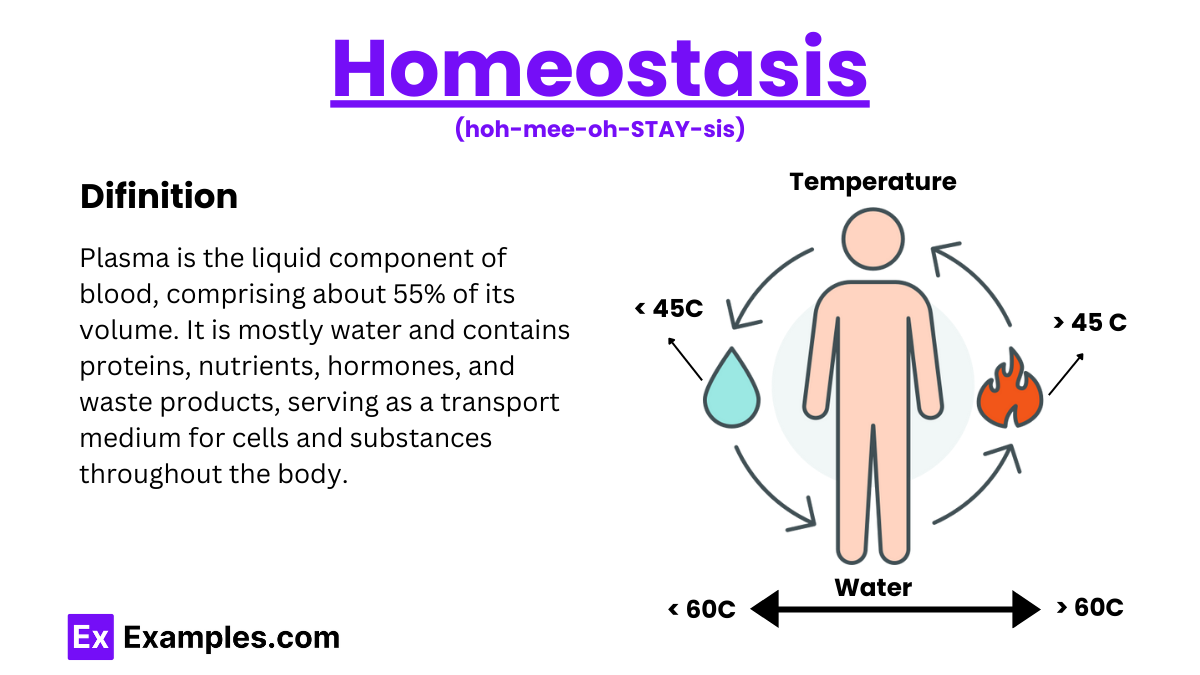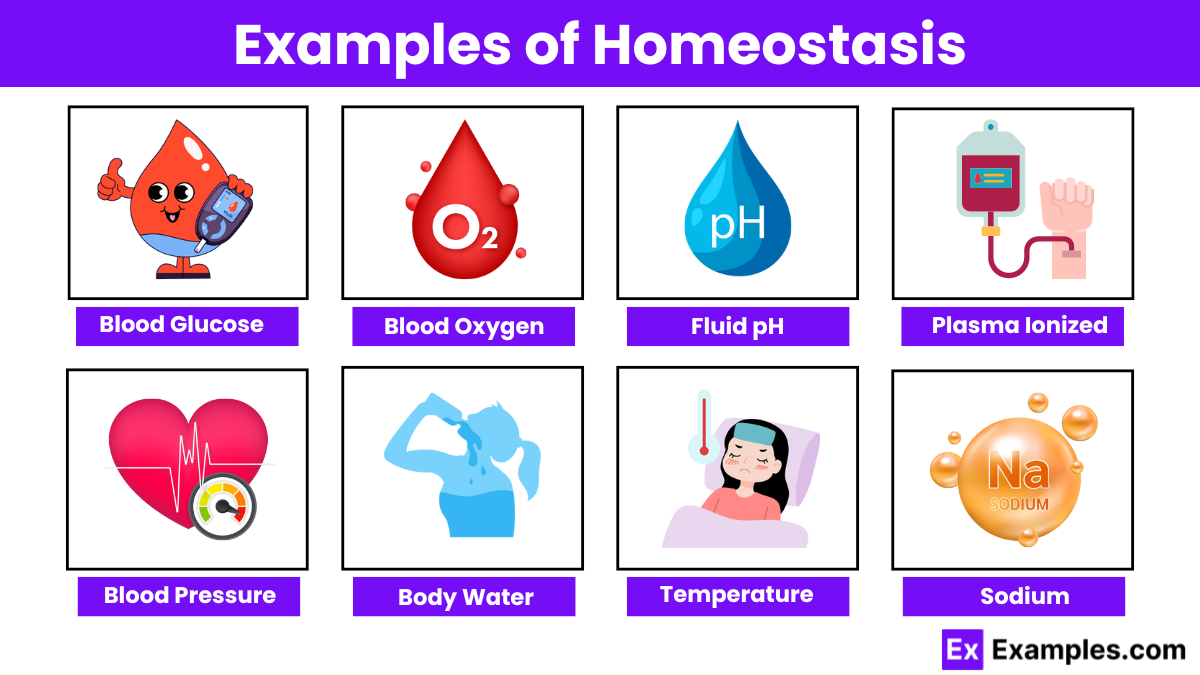What is homeostasis?
The process of cellular respiration
The maintenance of a stable internal environment
The breakdown of food in the digestive system
The production of energy in cells


Homeostasis is the process by which living organisms regulate their internal environment to maintain stable conditions necessary for survival. This includes regulating temperature, pH, and other vital parameters. Homeostasis is crucial for maintaining the balance within an ecosystem, ensuring that organisms can function effectively within a food web. By adapting to environmental changes, species contribute to the stability and resilience of the entire ecosystem, allowing for sustainable interactions and energy flow among different trophic levels.
Homeostasis is the process by which organisms maintain stable internal conditions, such as temperature, pH, and hydration, essential for survival. This regulation ensures optimal functioning despite external environmental changes, supporting overall health and balance within ecosystems and contributing to the stability of food webs.

| Aspect | Homeostasis | Allostasis |
|---|---|---|
| Definition | Maintenance of a stable internal environment | Process of achieving stability through change |
| Mechanism | Uses set points to regulate internal conditions | Adjusts set points based on predicted needs and stressors |
| Goal | Keep internal conditions constant | Adapt to changing conditions and stressors |
| Feedback Type | Primarily negative feedback | Involves anticipatory and feedback mechanisms |
| Time Frame | Short-term, immediate adjustments | Long-term, adaptive changes over time |
| Examples | Temperature regulation, blood glucose levels | Stress response, adaptation to chronic environmental changes |
| Physiological Scope | Focused on individual parameters | Integrates multiple systems and parameters simultaneously |
| Adaptation | Responds to immediate deviations from set points | Anticipates future needs and adjusts accordingly |
| Typical Systems Involved | Nervous and endocrine systems | Nervous, endocrine, and multiple organ systems |
| Relevance to Health | Essential for acute health maintenance | Important for long-term health and resilience |
It ensures optimal functioning of physiological processes and overall health.
The body regulates temperature through sweating, shivering, and adjusting blood flow.
Kidneys maintain water and electrolyte balance and remove waste products.
Insulin and glucagon regulate blood glucose levels.
Negative feedback mechanisms reduce the effect of a stimulus to maintain balance.
Blood pressure is regulated through heart rate, blood vessel constriction, and kidney function.
The respiratory system maintains oxygen and carbon dioxide levels.
The body maintains pH balance through respiratory and renal systems.
Disruption can lead to disease or dysfunction in the body.
Yes, homeostasis often involves coordinated actions of multiple organ systems.
Text prompt
Add Tone
10 Examples of Public speaking
20 Examples of Gas lighting
What is homeostasis?
The process of cellular respiration
The maintenance of a stable internal environment
The breakdown of food in the digestive system
The production of energy in cells
Which of the following systems is primarily responsible for regulating body temperature in humans?
Digestive system
Nervous system
Endocrine system
Respiratory system
What role do feedback loops play in homeostasis?
They introduce changes to the internal environment
They stabilize internal conditions by responding to deviations
They inhibit all forms of external stimuli
They prevent any changes in the internal environment
Which type of feedback mechanism increases the effect of a stimulus in the body?
Negative feedback
Positive feedback
Neutral feedback
Static feedback
How does the body respond to a high blood glucose level?
By increasing insulin secretion to lower glucose levels
By decreasing insulin secretion to increase glucose levels
By increasing the production of glucagon
By reducing the rate of digestion
Which organ is primarily involved in maintaining fluid balance in the body?
Heart
Liver
Kidneys
Lungs
What is the primary function of the hypothalamus in homeostasis?
To produce hormones that regulate growth
To control heart rate and blood pressure
To act as a thermostat for temperature regulation
To process sensory information
Which process helps maintain the pH balance in blood?
The release of enzymes in the stomach
The exchange of gases in the l
The buffering action of bicarbonate ions
The absorption of nutrients in the intestines
What happens to the body’s homeostatic mechanisms during prolonged dehydration?
Blood pressure decreases and the kidneys stop functioning
The body produces more urine to increase fluid levels
The body conserves water and reduces urine output
The liver increases its production of glucose
How does the body maintain blood pressure homeostasis?
By altering heart rate and blood vessel diameter
By increasing the rate of digestion
By regulating body temperature
By changing respiratory rate
Before you leave, take our quick quiz to enhance your learning!

